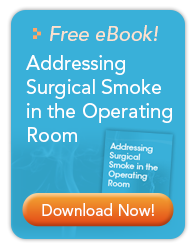This article, written by Arthur Frederick, "The Next Revolution in Surgery May Come From a Small, Under-the-Radar, Company" originally appeared on www.mdtmag.com.
The next revolution in surgery may come from a small medical equipment company which, according to its own executives, has always preferred to fly a bit under the radar.
Bovie Medical Corp., a public company with executive offices in Melville, N.Y. but with labs and manufacturing facilities in Clearwater, Fla., has received permission from the U.S. Food & Drug Administration (FDA) to begin marketing this summer a new, non-contact surgical device called J-Plasma. Initial evaluations are expected to take place in several surgical centers around the country.
"We announced the J-Plasma concept several years ago, but the process of getting any new product to market has become increasingly difficult and time-consuming," said Rob Saron, Bovie Medical's president. "Because of that, the initial excitement may have waned a bit. But J-Plasma's time has finally arrived."
Bovie Medical is known most widely for its cauteries and other electrosurgical products, but it owns four patents for the J-Plasma technology, the first of which was granted in 1999. The latest patent was granted last November.
Five other patents related to the new technology are pending.
Stated simply, J-Plasma uses Helium flowing over an electrically charged point that ionizes the gas and thus creates the plasma stream. An energized blade, used in conjunction with the plasma results in an enhanced incision, reducing tissue damage when compared to a traditional electro-surgical device.
The plasma stream is adjustable. At high intensities (high level of electrical energy, low gas flow), J-Plasma can treat large areas of diseased tissue by cauterizing targeted tissue as it moves and minimizing collateral damage to surrounding healthy tissue. At low intensities (low level of electrical energy, high gas flow), it can perform the most delicate of surgical procedures. The energy required to ionize the gas into a plasma, even at the highest setting, is so minimal that the clinician does not need to use a grounding pad. This is beneficial in certain procedures where the surgeon may desire little or no energy passing through the patient, such as with some cardiovascular or neurology procedures. The J-Plasma surgical tool can cut like a standard scalpel; cut with an enhanced plasma-based electrosurgical effect; and coagulate (or provide hemostasis) using the plasma stream, all with a single hand piece.
"In this advanced version, the conductive point is actually a retractable surgical blade," Saron said. "The blade can be extended and used as a standard scalpel for incisions, biopsies, and so on."







